Czechoslovak aircraft in the Luftwaffe and in the air forces of the allies of Nazi Germany
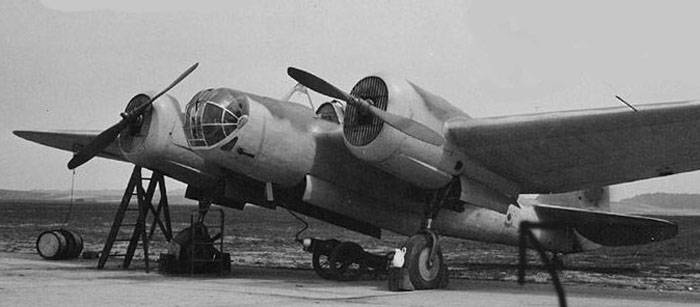
In the late 1930s, the main types of equipment and weapons for the ground forces were created and mass-produced in Czechoslovakia. Moreover, rifle weapon, artillery systems and armored vehicles were in steady demand from foreign buyers.
However with aviation things weren't going so well. The Czechoslovak aviation industry produced aircraft of its own design, but a significant part of the aircraft fleet was foreign-made or built under license.
In 1938, the Czechoslovak Air Force had 443 fighters, 187 bombers and 483 reconnaissance aircraft. Of which 219 fighters, 147 bombers and 251 reconnaissance aircraft were in combat units. The remaining aircraft were used for training or were in reserve. For military transportation, transport and passenger aircraft of the civil airline CLS, owned by the Škoda concern, could be used.
After the annexation of Czechoslovakia in 1939, the Germans carried out an audit of the aircraft they inherited. Part of the captured Luftwaffe aircraft was used for training and support purposes, and the remaining aircraft were handed over to the Allies or sent for scrap.
The Czechoslovak Air Force had about 20 different models of fighters, bombers and reconnaissance aircraft. This publication will consider aircraft used by Germany and its allies, as well as assembled at the production facilities of Czech aircraft manufacturing companies during the Second World War.
fighter aircraft
In March 1939, the Germans captured eight Avia B-34 fighters. The aircraft was an all-metal single-seat biplane with fixed landing gear and an open cockpit. Fighter with a maximum takeoff weight of 1 kg and a liquid-cooled engine Avia Vr 730 (Hispano-Siuza HS-36Nbr) with a capacity of 12 hp. With. in horizontal flight could accelerate to 740 km / h. Armament consisted of two 315 mm vz. 7,92.
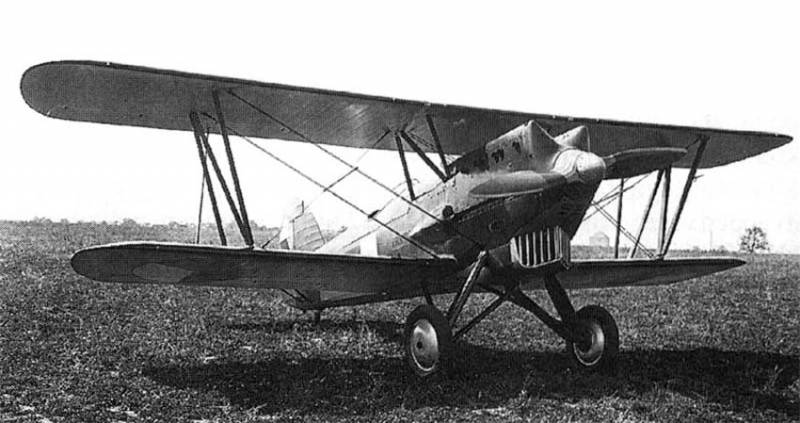
Avia B-34 fighter
By the time of the German annexation of Czechoslovakia, the fighter, put into service in 1934, was outdated and was used for training purposes. The Luftwaffe command was not interested in these archaic biplanes, and they were transferred to Slovakia, where three aircraft survived until 1944 and were destroyed during the Slovak National Uprising.
In the late 1930s, the basis of the fighter aviation of the Czechoslovak Air Force was the Avia B. 534 single-seat biplane. With. developed a maximum speed of 2 km / h in horizontal flight. The aircraft was originally armed with four rifle-caliber machine guns. Serial production of the B. 120 began in September 12. It was built by the factories "Avia", "Aero" and "Letov".
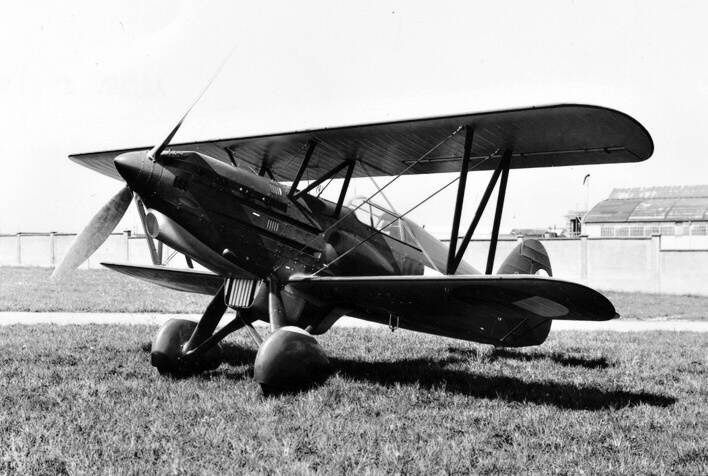
Avia B.534 fighter
Upgraded Avia Bk. 534 (B. 634), which appeared in the summer of 1936, was distinguished by improved aerodynamics and powerful armament, consisting of a 20 mm Oerlikon FFS 20 cannon and two synchronized 7,92 mm vz. 30. With the same 850 hp engine. With. the maximum speed of the fighter was 415 km / h.
For the mid-1930s, the B. 534 was a very good fighter, not inferior in its characteristics to most foreign peers. It is generally accepted that the biplane B. 534 hopelessly lost to the German all-metal monoplane Messerschmitt Bf. 109. However, it should be taken into account that Bf. 109, which began mass production in 1937, was initially very crude, and the Bf. 109B / C / D did not have a particular advantage over B. 534. Other German fighters: He-51 and Ar-68 - were inferior to B. 534 in terms of flight data and weapons.
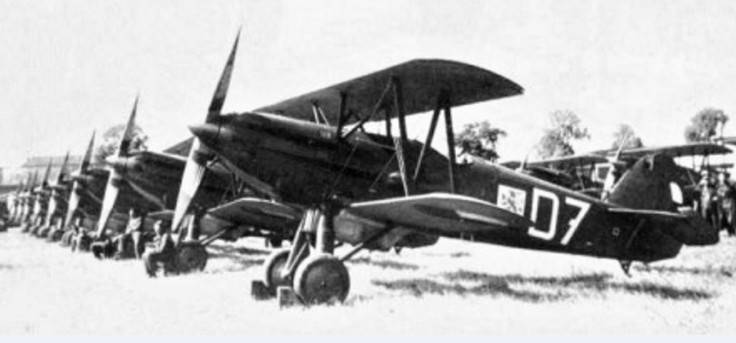
At the time of annexation, the Air Force of Czechoslovakia had about 380 machine-gun and cannon biplanes in flight condition. Despite an approximately two-fold numerical superiority, the German fighter aircraft did not have a particular advantage in the quality of their machines. The Czechoslovak Air Force in 1938 was a strong enemy and it could take significant efforts to defeat them.
Czech fighters captured by the Germans were operated mainly as trainers. In 1940, several captured biplanes were converted into carrier-based training fighters, equipped with landing hooks and equipment for taking off from catapults. German pilots trained on them for about two years, preparing to fly from the deck of the Graf Zeppelin aircraft carrier. In a propaganda film about the 1939 military campaign filmed in Germany in 1940, B-534s were portrayed by Polish fighters. Until 1943, V. 534 served in combat units. They were mainly used in training flights as glider tugs and occasionally for attacking ground targets.
Slovak V. 534s in 1941 escorted German bombers on the Eastern Front. In the summer of 1942, the few surviving biplane fighters of the Slovak Air Force were attracted to fight the partisans.
In 1939, Bulgaria decided to purchase 78 V. 534 fighters from Germany. The last batch of aircraft was delivered in March 1942. Bulgarian fighters of this type in August 1943 tried to attack American B-24 Liberator bombers returning from the bombing of Ploiesti. However, the Bulgarian V. 534 did not show any visible success, and several fighters damaged in battle crashed during landing. After Bulgaria declared war on Germany in September 1944, B. 534 fighters were used to attack German troops.
The Germans handed over a number of V. 534 biplanes to Croatia, but no information could be found on the combat use of Croatian aircraft.
Speaking about Czech fighters, it is appropriate to mention the export Avia B. 135, which was an improved version of the Avia B. 35 monoplane fighter that did not go into series. The B. 35 fighter was designed to replace the outdated B. 534 biplane, but due to the German occupation It happened.
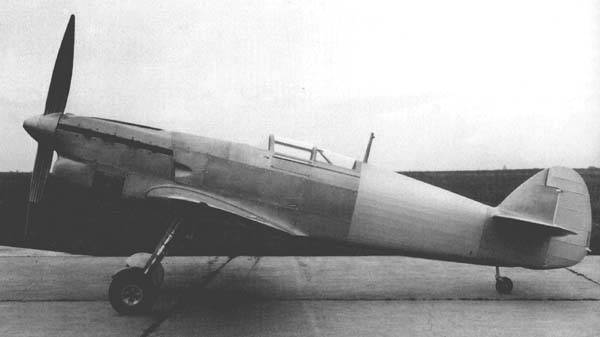
Avia B.135 fighter
The prototype made its first flight on June 26, 1939, during the test the aircraft showed good results. During the tests, a fighter with a maximum take-off weight of 2 kg at an altitude of 547 m was able to reach a speed of 4 km / h. The practical flight range was 000 km. Practical ceiling - 535 m. Armament consisted of one 550 mm MG FF cannon and two 8 mm wz machine guns. 500, which at that time was considered quite sufficient.
Flight data was largely limited by the relatively weak Avia (Hispano-Suiza) HS 12 Ydra engine with 850 hp. With. and wooden propeller. The designers proposed to equip the aircraft with a 1 hp engine. With. and a variable pitch metal propeller.
In 1940, the aircraft was tested by Luftwaffe pilots, but they considered that the B. 135 had no advantages over the Messerschmitt Bf 109E.
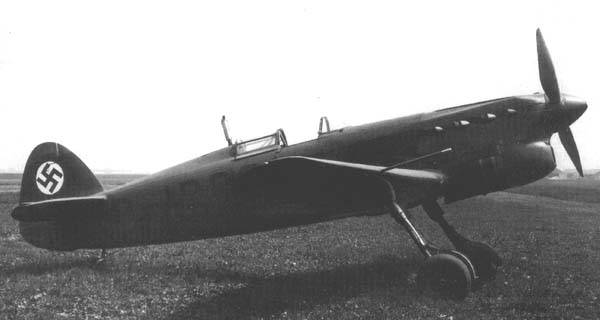
After the Germans showed no interest in the Czech fighter, it was flown by Bulgarian pilots who had previously flown B. 534 biplanes. As a result, Bulgaria ordered 12 fighters from Avia and acquired a license for production. The transfer of all aircraft to the customer took place in 1942.
Licensed production of B. 135 in Bulgaria failed, and the purchased aircraft were used to a limited extent. The only success of the Bulgarian B. 135 fighters is the shooting down of the B-24 Liberator bomber. This happened on March 30, 1944. On that day, four B. 135s from the flying school were on a training flight, and their encounter with American bombers invading Bulgarian airspace was in fact an accident.
Scouts and bombers
In the 1930s, the Czechoslovak aircraft manufacturer Aero Tovarna Letadel created a number of reconnaissance and short-range bombers of the "hundredth series", and the first in the family of two-seat biplanes was the Aero A. 100. Although the aircraft was already outdated at the time of the first prototype, it was accepted into service, in 1934–1935 44 examples were built.
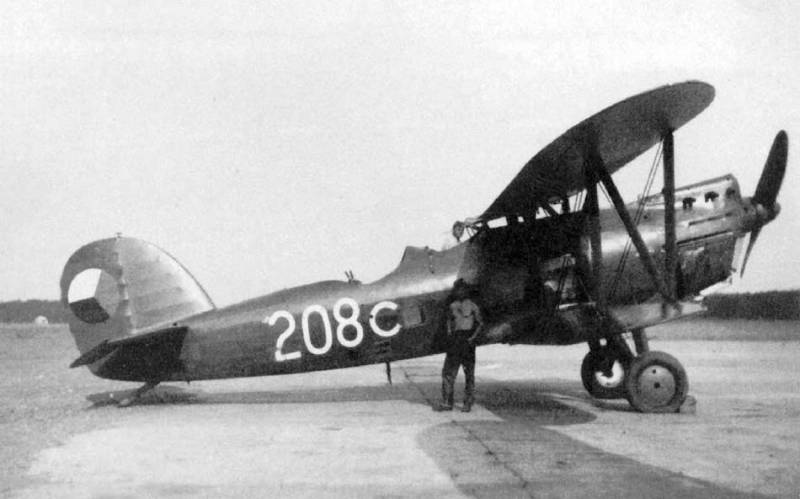
Aero A. 100 reconnaissance and short-range bomber
Liquid-cooled aircraft Avia Vr. 36 V-12 740 HP With. in horizontal flight developed 270 km / h. The maximum takeoff weight reached 3 kg. Ferry range - 219 km. For forward firing, two rifle-caliber machine guns wz. 900. At the disposal of the pilot-observer was a twin turret installation wz. 30 disc powered. It was possible to carry 30 kg of bombs. When used as a reconnaissance aircraft, additional fuel tanks were installed, and the bomb racks were dismantled.
A further development of the A. 100 was the A. 101. It was a larger machine, equipped with a water-cooled Praga-Isotta Fraschini Asso 750 W-18 engine with 990 hp. With. The maximum takeoff weight was 4 kg, and the flight range and speed were slightly changed compared to the A. 345. The bomb load increased to 100 kg.
A number of A. 101 biplanes were bought by Spain, and aircraft of this type were used by both warring parties. The Czechoslovak Air Force used the Ab-101 modification aircraft.
In 1939, Germany shared with Slovakia three dozen Aero A-100 and Ab-101, which were in flight condition.
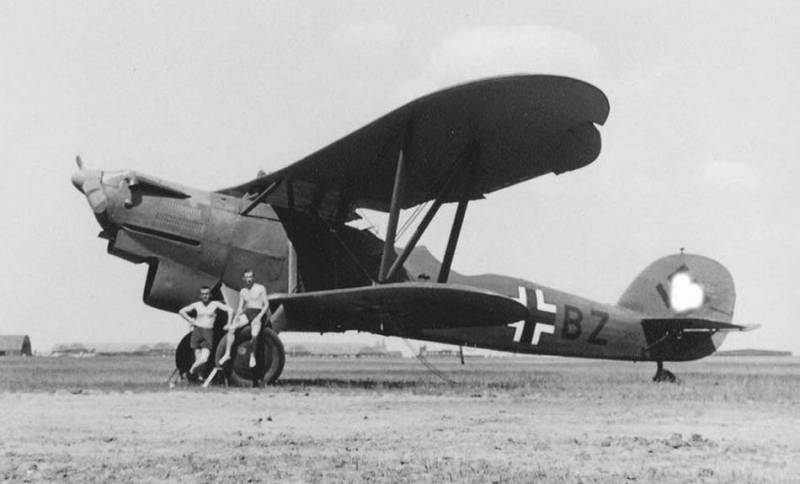
Hopelessly outdated biplanes were used to deliver various cargoes, tow gliders and targets. The service of these aircraft ended in 1944.
The French Bloch MB was used as a heavy bomber (in Czech terminology). 200, built under license by Aero since 1937. Czechoslovak variant of the Aero MB bomber. 200 received other engines, propellers and reinforced weapons.
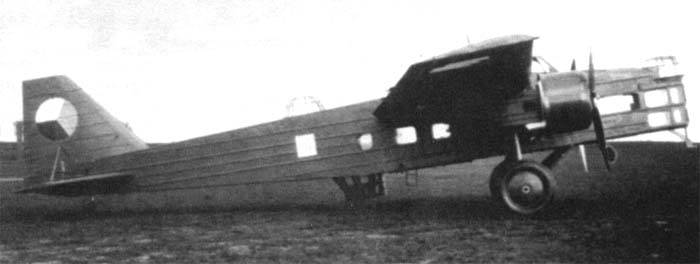
Aero MB bomber. 200
Two Gnome-Rhone 14Kirs air-cooled engines, 870 hp. With. each provided an aircraft with a maximum take-off weight of 7 kg at a speed of 480 km/h. Range - 285 km. Practical ceiling - 1 m. The bomb load reached 000 kg. Defensive armament consisted of three rifle-caliber machine guns.
In March 1938, the Germans got 67 Aero MB. 200. In the Luftwaffe, they were operated for about a year.
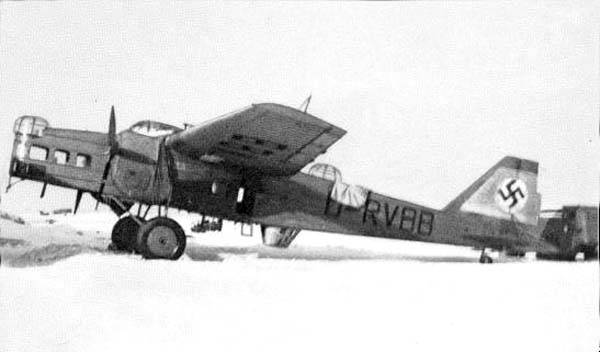
Germany handed over part of the Czechoslovak-made aircraft to the allies: Slovakia, Bulgaria, Romania and Croatia. Due to a shortage of spare parts, the Slovak Air Force quickly abandoned the MB. 200. Until 1944, Bulgarian and Romanian aircraft were involved in patrolling the Black Sea.
From 1932 to 1940, the Letov Kbely company produced Letov S. 328 multi-purpose aircraft, a total of 412 aircraft were produced. This biplane was conceived as a station wagon, when issuing the terms of reference, the military set the condition that, depending on the installation of special equipment, the aircraft could be used as a long-range or night fighter, light bomber or reconnaissance aircraft.
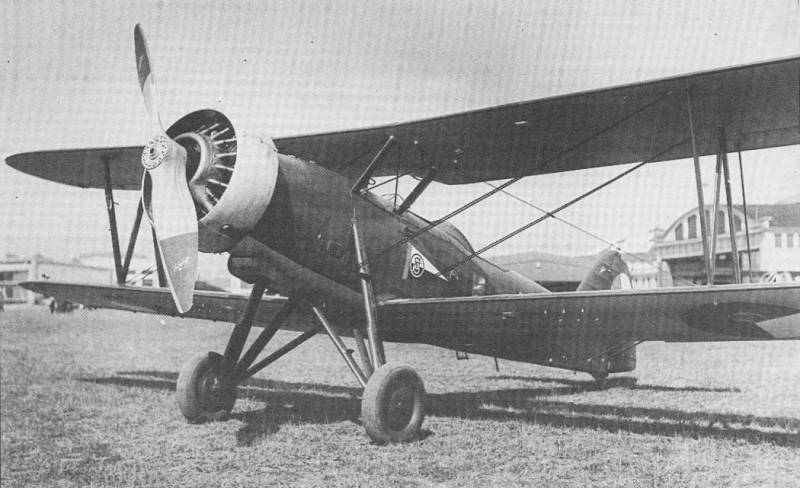
Aircraft Letov S. 328
In fairness, it should be said that the S. 328 was almost incapacitated as a heavy fighter. Air-cooled Walter Pegasus II-M.2 engine with 580 hp. With. at an altitude of 1 m, he accelerated a two-seat biplane to 500 km / h. The aircraft with a maximum takeoff weight of 280 kg had a flight range of about 2 km. The bomb load reached 720 kg.
The lineage of the S. 328 aircraft began in 1928 with the S. 28 reconnaissance biplane. In turn, the design of the S. 28 was based on a somewhat reduced scheme of the company's first all-metal aircraft, the Letov S. 16 bomber (1926). However, the power of the 240-horsepower engine was not enough for the scout, so the order for the S. 28 did not follow. In 1931, the S. 128 appeared, equipped with a much more powerful (450 hp) engine. Particular attention was paid to increasing the strength of the chassis and fuselage. The tests were successful, and the Czechoslovak Air Force in 1932-1933. received 16 such aircraft.
Czechoslovakia traditionally paid a lot of attention to export deliveries of defense products, and for this, the multi-purpose S. 1932 was created in 328. Initially, the aircraft was created in accordance with the requirements of the Finnish Air Force, but it never made it to this country. In 1935, the S. 328 entered service with the Czechoslovak Air Force. It also existed in the version of a long-range and night fighter, for which 13 aircraft were armed with four 7,92-mm machine guns vz. 30 in the wings and two turrets vz. 30 at the letnab. Although Czechoslovakia was landlocked, it needed a target tug for the anti-aircraft artillery range in the Bay of Kotor, for which 4 S. 328v (v - vodní) float planes were built.
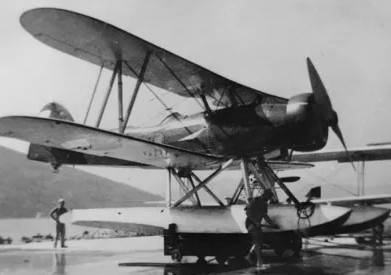
Typically, the S. 328 was used as a reconnaissance aircraft, light bomber and attack aircraft. At the time of the conclusion of the Munich Agreement, the Czechoslovak Air Force had 227 aircraft in forward units and 87 aircraft in aviation schools and storage bases.
The issue of S. 328 continued after the German occupation of Czechoslovakia, until 1940. The last to be produced were 30 aircraft for Bulgaria and 50 for Slovakia.
In the Luftwaffe, captured S. 328s were used as trainers and as night bombers on the Eastern Front in the winter of 1942-1943.
Slovak S. 328s in September 1939 carried out reconnaissance and bombing sorties, supporting the Slovak troops participating in the invasion of Poland. After the attack on the USSR, Slovak S-328s in 1941 were used for patrol and reconnaissance flights, as well as for bombing and assault attacks on transport columns. In the summer of 1942, they were used in counterguerrilla operations in Ukraine.
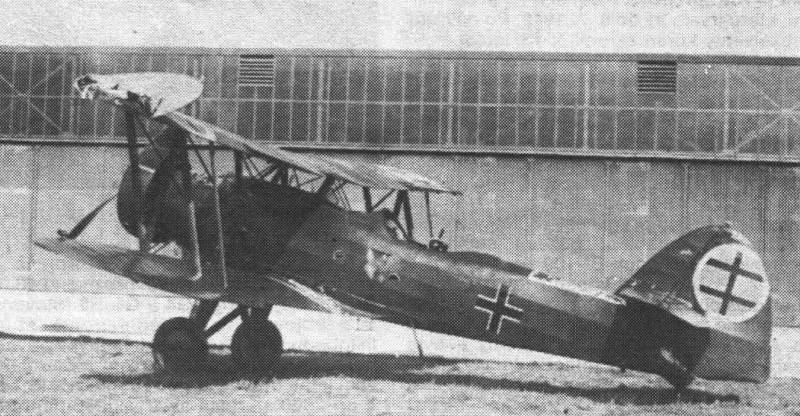
At least 11 Slovak aircraft took part in the battles against the Germans during the Slovak National Uprising in September-October 1944. At the same time, air battles with German aircraft took place. The case is described when the Slovak S. 328 on September 7, 1944 fired machine guns at the German Fw 189 reconnaissance aircraft, as a result of which it made an emergency landing, landing in an area controlled by the rebels.
Bulgarian S. 328s were used to patrol over the Black Sea. Information about their combat use could not be found. It is known that these machines remained in service at least until September 1944.
The Aero A. 304 light reconnaissance bomber was created on the basis of the A. 204 passenger aircraft. The partially redesigned fuselage retained the side glazing and crew positions, acquiring a cleaner aerodynamic shape. On the low wing, Walter Super Castor 9-cylinder radial engines with 435 horsepower were installed. With. with two-bladed wooden propellers.
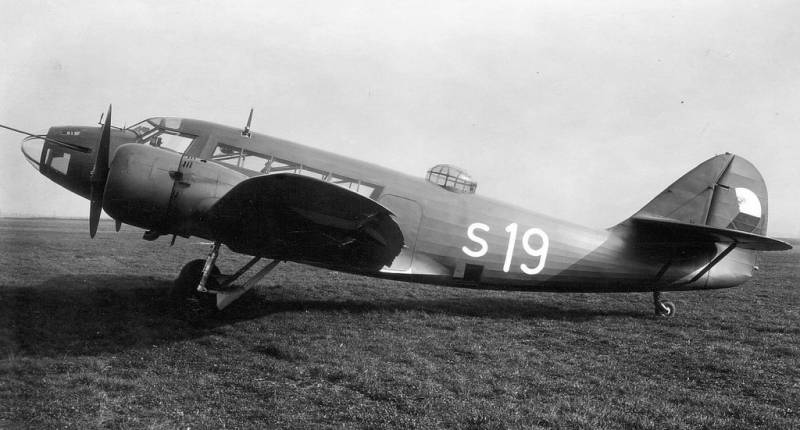
Light reconnaissance bomber Aero A. 304
In level flight at an altitude of 1 m A. 500 could accelerate to 304 km / h. Cruising speed - 322 km / h. Practical ceiling - 290 m. Range - 5 km. Holders for bombs weighing up to 800 kg were mounted under the wing, one 1-kg bomb or several small ones could be placed in the bomb bay. The maximum weight of the bomb load did not exceed 190 kg. Defensive armament consisted of a 50-mm machine gun located in the middle part of the fuselage and intended to protect the upper hemisphere and tail. Another machine gun protected from fighter attacks from below.
In the middle of 1937, even before the end of the tests, 19 aircraft were ordered, of which almost half were ready by September 1938. After the annexation of the Czech Republic, several aircraft were still in varying degrees of readiness, so their final assembly was carried out under the control of the invaders.
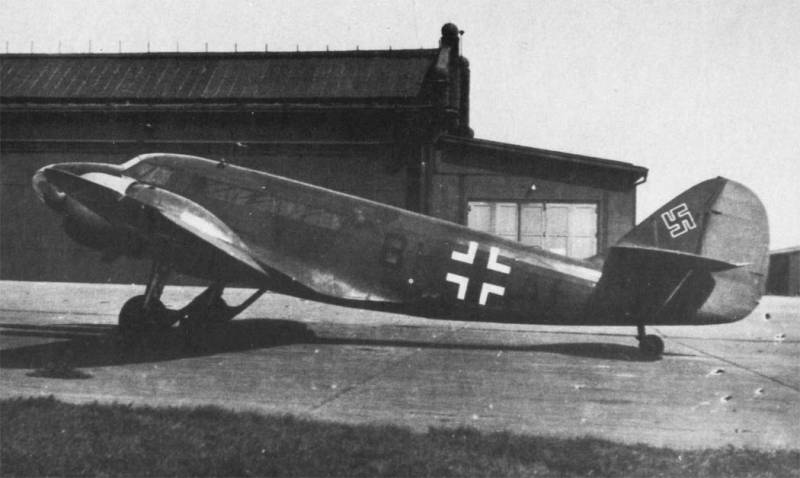
The bulk of the captured aircraft were sent to flight schools, and weapons were dismantled from them. The disarmed A. 304s were also used for cargo and passenger transport. A couple of years later, several A. 304s were sold to Bulgaria, where they received the nickname "Pelican". During 1941–1943 Bulgarian "Pelicans" were used to transport goods and people. At least one A. 304 was in the Slovak Air Force.
In the 1930s, there was active military-technical cooperation between Czechoslovakia and the Soviet Union. Soviet specialists were interested in the new artillery systems of the Skoda company, in turn, the USSR offered modern aircraft.
In March 1937, a license contract was signed for the construction of 160 SB bombers in Czechoslovakia. In April and May 1938, the Czechoslovak Air Force received 60 Soviet-made aircraft with Hispano Suiza 12Ybrs engines. Another 101 bombers and 60 reconnaissance aircraft were supposed to be built under license, giving them the designation Avia B. 71.
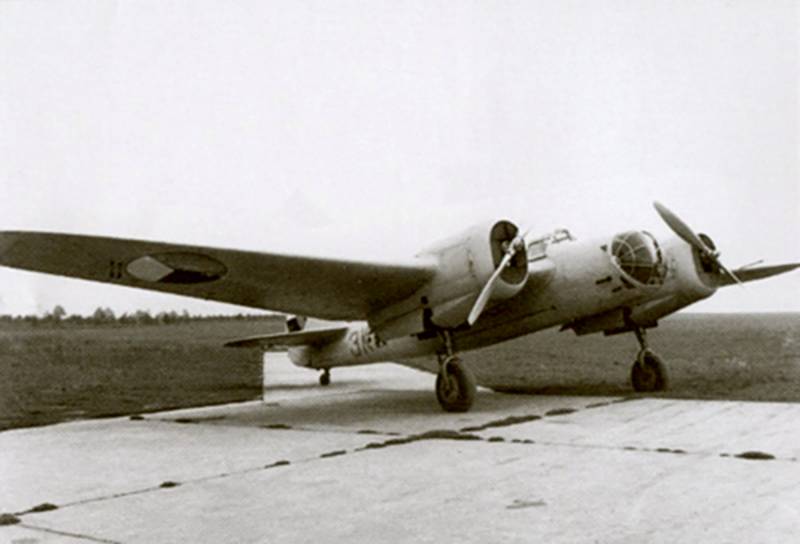
Avia B.71 bomber
The Avia B. 71 bombers differed from the SB aircraft operated by the Red Army Air Force in terms of engines, weapons, instruments and communications. With two engines Hispano Suiza 12Ybrs with a capacity of 860 hp. With. each B. 71 could reach a speed of 430 km / h. Cruising flight speed - 345 km / h. Practical range - 1 km. Practical ceiling - 000 m. Take-off weight - 9 kg. To protect against fighters, there were three 000-mm machine guns vz. 6. Bomb load - up to 000 kg.
When the Germans invaded Czechoslovakia, they captured 59 serviceable B. 71s from Czechoslovak airfields. These were aircraft built in the USSR, but with engines, weapons, radios and other equipment made in Czechoslovakia. Most of the captured bombers were transferred to the Merseburg airfield in Germany, where they were until the Luftwaffe command decided on their further use.
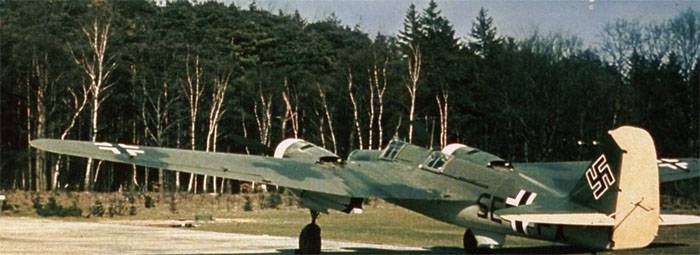
One B. 71 was tested for two months at the test center in Reuchlin. Although the bomber was designed as a high-speed bomber, and was so in relation to biplane fighters built in the mid-1930s, after the appearance of monoplane fighters with retractable landing gear and a closed cockpit, it ceased to be "high-speed". After analyzing the test results, the German command decided to use captured Soviet-Czech bombers for target towing and weather reconnaissance.
Half of the captured park (32 units) was sold to Bulgaria in September 1939. Bulgarian B. 71s searched for the camps of Greek partisans and bombed them in the areas of the White Sea Thrace and Macedonia. Although by the end of 1944 there were only five Soviet-made bombers left in service, and they were badly worn out, after Bulgaria went over to the side of the USSR, Bulgarian pilots attacked German troops on Avia B. 71 aircraft. Their targets were railway stations, mechanized columns and enemy concentrations.
At the time of the invasion in Czechoslovakia, a large reserve was created for the establishment of licensed production of the B. 71. The occupying authorities initiated the production of a modified modification of the B. 71A at the Avia and Aero factories. In addition to this, Soviet-built B.71s still in German hands were converted to B.71A standard. The Avia factory in Čakovice delivered 41 B-71As. The Aero plant in Vysochany produced 35 B-71As. The last reserved aircraft were accepted by the customer in September 1940.
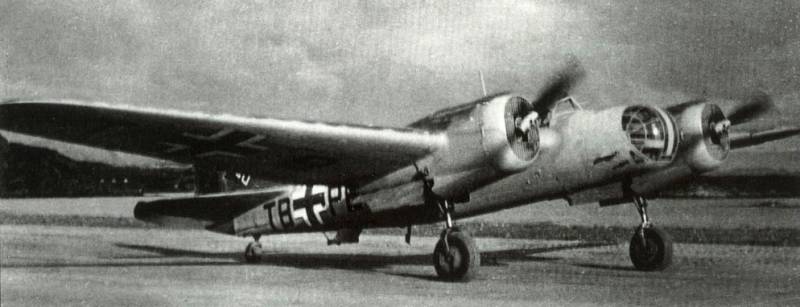
V. 71A target tug converted from a Soviet-built bomber
The V. 71A target tugs, produced at Czech factories, had a number of differences from the Soviet-built V. 71 bombers. The aircraft, made by German order, did not have weapons, the nose of the fuselage was deprived of glazing and was sewn up with metal. The radio antenna masts on the top of the fuselage were replaced with a retractable antenna on the lower right of the fuselage. Rear-view mirrors were mounted on the cover of the cab lights.
Most B. 71A aircraft did not have round windows in the sides of the rear fuselage. Instead of a hatch machine-gun mount, a fairing was mounted, under which a cable of towing equipment was passed. The equipment consisted of a winch and a drum with a cable with a diameter of 2,5 mm and a 3-meter cone, which was used by fighters in training. The winch and drum were mounted in the bomb bay.
In 1940, the assembly of the B. 71B target towing vehicle began, which was a development of the B. 71A aircraft. Aircraft B. 71B differed from its predecessor in details and equipment. The length of the towing cable on it has been increased to 1 m. The position of the operator of the towing equipment has been shifted forward to make room for the improved target towing equipment. The mass of towing equipment has increased from 000 kg to 210 kg. The visor of the cockpit canopy was shifted a little forward. The bomb bay doors were not installed. On some V. 280Bs of late construction, visors were installed in front of the sliding canopy of the rear cockpit. Holders for external cargo suspension were mounted on the lower surface of each wing console.
The Avia and Aero factories built 35 B. 71B aircraft. The first V. 71V left the assembly shop of the plant in Vysochany on October 18, 1940. The last aircraft built in Čakovice was delivered on 30 April 1941.
German fighters produced by Czech enterprises during the years of occupation and their post-war use
In 1944, about twenty-five thousand people worked at the aircraft manufacturing facilities of Avia, Mraz, Zlin, Letov and Aero, who produced engines and parts for German aircraft. At the end of World War II, in connection with the fierce bombing of German aircraft factories located in Germany, an attempt was made to establish the production of fighters at the Avia plant in Cakovice. For the needs of the Luftwaffe, from parts supplied by German factories, in 1944 they began assembling Messerschmitt Bf. 109G-6 and Bf. 109G-10, as well as two-seat trainers Bf. 109G-12.
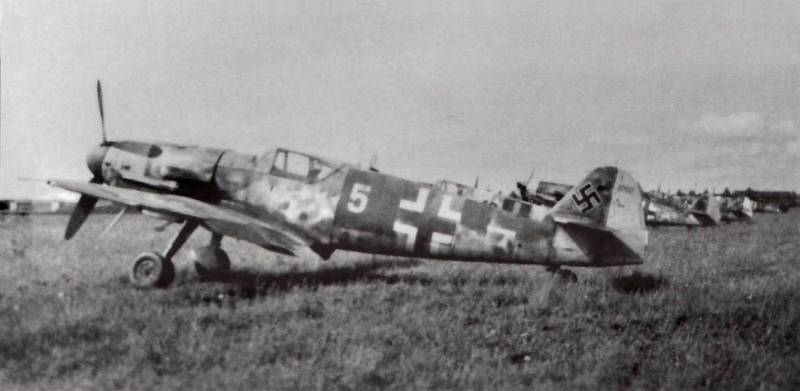
Fighter Messerschmitt Bf. 109G-10/U4
bf. 109G-10, whose assembly at the Avia plant in Cakovice began in December 1944, was equipped with a 605 hp DB 2D-1 engine. With. Fighter modification Bf. 800G-109/U10 was armed with a 4mm MK motor cannon. 30 and two 108mm MG. 13. The normal takeoff weight was 131 kg. At an altitude of 3 m in level flight Bf. 196G-4 accelerated to 000 km / h. A fighter with a DB 109DC engine at an altitude of 10 m could reach a maximum speed of 630 km / h.
Soon after the restoration of the independence of Czechoslovakia, it was decided to continue the production of Messerschmites from the existing assembly kits. The single-seat fighter received the designation S-99, and the two-seat trainer - CS-99.
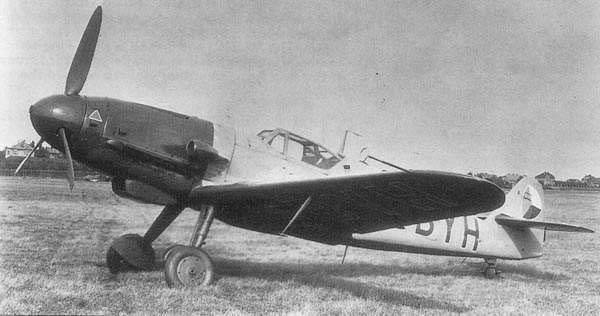
Avia S-99 fighter
Due to the small number of aircraft engines and the limited resource of the extremely forced Daimler-Benz DB605, there was a shortage of engines, and by 1947 only 20 S-99 and 2 CS-99 fighters were built. Avia engineers solved the problem by installing on the Bf-109 other German aircraft engines available in the country - the Junkers Jumo-211F with a capacity of 1 liters. With. An aircraft with such an engine was designated Avia S-350.
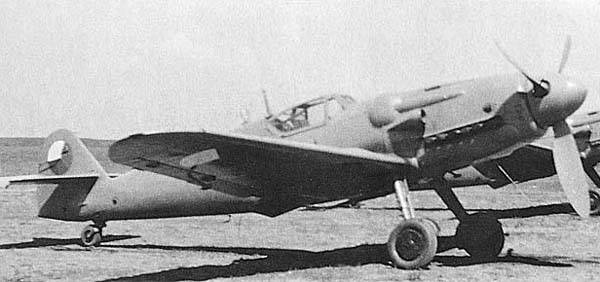
Avia S-199 fighter
In addition to the new engine, the S-199 used a larger diameter metal propeller, a different hood and a number of auxiliary units. The composition of the armament also changed, a pair of synchronous MG machine guns was left on the S-199. 131, and two more 7,92-mm machine guns could be mounted in the wing, or two 20-mm MG guns were suspended in special gondolas. 151.
Due to the fact that the Junkers Jumo-211F engine was originally designed for bombers: it had a longer resource, but was significantly heavier and produced less power. As a result, the S-199 was noticeably inferior in flight performance to the S-99 with the Daimler-Benz DB605 engine. The speed in level flight dropped from 630 to 540 km / h, the ceiling - from 11 m to 000 m. In addition, the heavy engine caused a sharp shift forward of the center of gravity, and this greatly complicated piloting, especially during takeoff and landing. Nevertheless, the S-9 was mass-produced until 000. In April 199, 1949 S-1949 fighters were sold to Israel. Despite relatively low performance, the S-25 was in service with the Czechoslovak Air Force until the mid-199s.
By the time mass production of the jet fighter was being launched, German aircraft manufacturing enterprises were subjected to regular air strikes by British and American heavy bombers. To reduce the consequences of the bombing, the leadership of the Third Reich decided to decentralize the production of components and organize the assembly of aircraft at several factories at the same time. One of these enterprises was the Czech "Avia".
Although the Germans failed to establish a full-fledged production of jet fighters in the protectorate of Bohemia and Moravia, after the liberation the Czechs were left with a complete range of components (including Jumo-004 aircraft engines), of which nine single-seat jet fighters were assembled from 1946 to 1948 and three training pairs. Single aircraft received the designation S-92, double - CS-92.
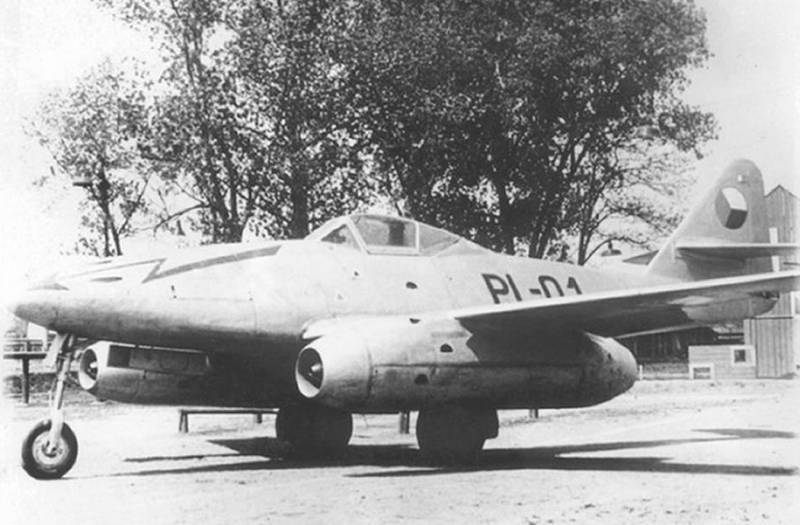
Fighter jet S-92
The flight of the first Czechoslovak jet fighter S-92 took place at the end of August 1946. All available S-92s and CS-92s were brought into the 5th Fighter Squadron, which was based at the Mlada Boleslav airfield, 55 km north of Prague.
However, the S-92 jet in the Czechoslovak Air Force did not operate for long. The reliability of the Jumo-004 turbojet engine left much to be desired, the engine life was only 25 hours. Fighter readiness was low, and the few jet fighters certainly could not effectively protect the country's skies.
After the start of deliveries of Soviet MiG-15s in 1951, the S-92 and CS-92 fighters were decommissioned.
Information